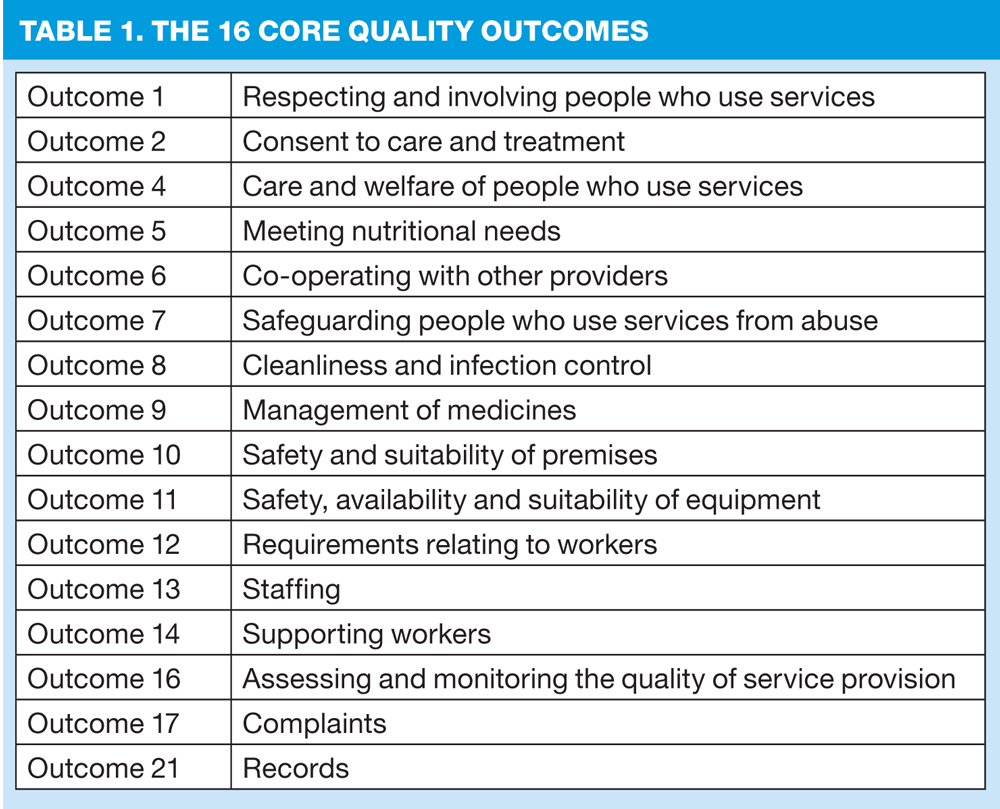An inspector calls
The author is a professional adviser who regularly participates in Care Quality Commission inspecti...
The author is a professional adviser who regularly participates in Care Quality Commission inspections in general practice
While your practice may not have been inspected yet, CQC inspections in primary care are now underway. In the first of an occasional series, we provide an overview of the CQC, what happens when an inspection takes place and how you could be involved
The Care Quality Commission (CQC) is the independent regulator of all health and care services in England.
The commission took over the work of three previous regulators and has responsibility for ensuring hospitals, care homes, dentists, GPs and care homes are safe and that they offer high-quality compassionate care and to ensure that patients can expect all health and adult social care services to meet essential standards of quality.
All GPs and other primary medical services were required to register with the CQC by 31 March 2013.
When the practice registers with the CQC it is required to state what regulated activities they provide. Most practices will be involved in the provision of treatment of disease, disorder or injury and diagnostic and screening procedures, while some may be involved in additional services such as family planning.
CQC has set 28 essential standards of quality and safety — 'outcomes' — with which GP practices must comply. Of the 28 outcomes, there are 16 core outcomes relating to the quality and safety of patient care. (Box 1)
When GPs register with CQC they will make an initial declaration of compliance (or non-compliance) in respect of the 16 core outcomes.
To maintain their registration they need to demonstrate an ongoing ability to meet the requirements. The CQC will monitor the standards and will undertake an inspection of the practice.
The inspection is undertaken by a CQC inspector often accompanied by professional advisor who may be a GP, practice nurse or practice manager.
The inspector will have information about the practice such as QOF figures, any concerns, complaints and safeguarding alerts, contract monitoring reports and where applicable, the last inspection report.
There are three types of inspection of general practices — these will be aimed at ensuring the practice is compliant with the essential standards of quality and safety.
1.Scheduled — standard routine inspection
2.Themed — where the inspector will focus on a specific area of concern
3.Responsive — where the visit is triggered by particular concerns about the quality or safety of a service.
In a scheduled or themed inspection, practices will be given 48 hours' notice
The CQC inspector will need to speak to the registered manager or nominated individual. If they are not available, the inspector will speak to a partner or the practice manager. The inspector generally will usually focus on five of the essential standards.
In a responsive inspection, where there are particular concerns about a service, the inspection is likely to be unannounced.
The inspection will involve touring and inspecting the premises; reviewing equipment and medicines; reviewing practice records and protocols and how these protocols have been implemented. The inspector will observe interaction between staff and patients, for example in the reception area, to see how patients are treated. The inspection will involve talking to patients and staff. The practice nurse may be asked to talk about her role in the practice, what support she receives and what education, training and updates she has had, and this may be checked against training records. If, for example, Outcome 8: Cleanliness and infection control is reviewed the practice nurse might very well be the infection control lead, and be able to provide details of audits, staff training and other relevant information, and be able to provide assurance that all standards are being met.
The inspector will also talk to patient participation groups in order to confirm patient involvement. Any patient surveys will also be reviewed.
The above is only an example of what might happen and is not meant to be a guide or direction and further reading is recommended.1
At the end of the visit the inspector will provide the practice with some feedback on his or her findings. This will be followed up by a report which sets out findings and judgements from the inspection, with explanation of why and how judgements were made.
If it was judged that the practice was not meeting one or more of the regulations, the CQC describe the level of impact (minor, moderate or major) of that judgement on patients and the action the Commission will take. The action will be proportionate to the impact that the breach of the regulation has on patients and other people. The CQC will also issue the practice with a compliance order.
A compliance action will be issued where breaches of a regulation have a minor impact on people. The practice will be required to submit a report showing an action plan in order to meet the regulations. The CQC may follow up on this with either a telephone call or a visit to check that the requested improvements have been made.
An enforcement action is given where a breach of regulation is more serious and will always be followed up with a visit.
All GPs will have their own profile page on the CQC website and each profile page has PDFs of all inspection reports.
REFERENCE
1. Care Quality Commission. What to expect from a CQC inspection. http://www.cqc.org.uk/sites/default/files/media/documents/what_to_expect_from_a_cqc_inspection_-_pms_quick_guide.pdf Accessed January 2014
Related articles
View all Articles
